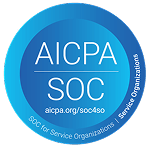FAQs
 What documentation do Pakistani students need to apply for a U.S. student loan?
What documentation do Pakistani students need to apply for a U.S. student loan?
Pakistani students applying for U.S. education loans typically need to provide proof of admission to a U.S. university, a valid F-1 student visa, passport details, academic transcripts and financial documents such as bank statements. Unlike loans in Pakistan which might require property collateral, many U.S. lenders designed for international students like MPOWER focus on your academic record and future earning potential instead. Additionally, Pakistani students should prepare their Statement of Purpose and proof of financial means for the first year as these documents strengthen both visa and loan applications.
 How do Pakistani students manage currency exchange risks with U.S. dollar-denominated loans?
How do Pakistani students manage currency exchange risks with U.S. dollar-denominated loans?
Managing currency exchange risk is a significant concern for Pakistani students with U.S. dollar loans, as the PKR-USD exchange rate fluctuations can substantially impact your repayment amounts. To mitigate this risk, consider setting aside additional funds as a buffer against rupee depreciation, exploring currency hedging options through Pakistani banks or establishing a U.S. dollar income source such as campus employment or optional practical training positions (OPT) after graduation. Many successful Pakistani students working in the U.S. tech sector find that earning in dollars while repaying dollar loans eliminates this exchange rate concern entirely.
 Can Pakistani students use education loan tax benefits available in Pakistan for U.S. student loans?
Can Pakistani students use education loan tax benefits available in Pakistan for U.S. student loans?
Yes, Pakistani students and their families may qualify for tax benefits under Pakistan’s Income Tax Ordinance for interest paid on education loans taken for higher studies abroad, including U.S. universities. Depending on current tax regulations, you might be able to claim deductions on the interest portion of your education loan repayments. However, to qualify for these benefits, it’s advisable to consult with a tax professional in Pakistan who specialises in international education financing. Many Pakistani students establish relationships with local banks that have partnerships with U.S. financial institutions to maximise potential tax advantages while studying abroad.
 How do repayment timelines for U.S. student loans differ from typical education loans in Pakistan?
How do repayment timelines for U.S. student loans differ from typical education loans in Pakistan?
U.S. student loans typically offer longer repayment periods compared to Pakistani education loans, with 10-year terms being standard versus the five-to-seven-year terms common in Pakistan. U.S. loans often provide more flexible repayment options including grace periods of six to nine months after graduation and interest-only payments during study periods. Unlike many Pakistani loans that require repayment to start immediately, U.S. lenders targeting international students understand the transition period needed after graduation to secure employment. This flexibility can be particularly valuable for Pakistani students pursuing degrees in fields that require additional time for job placement, such as research-oriented or specialised technical programmes.
 What strategies can Pakistani students use to improve their chances of loan approval without a U.S. cosigner?
What strategies can Pakistani students use to improve their chances of loan approval without a U.S. cosigner?
Pakistani students can significantly improve their loan approval chances by building a strong academic profile with high GRE/GMAT scores and targeting universities with strong job placement records in their field of study. Consider applying to lenders like MPOWER that specifically serve international students without requiring cosigners. Preparing a detailed career plan showing research on salary potential in your chosen field demonstrates to lenders your loan repayment capacity. Additionally, securing partial funding through scholarships or assistantships reduces the loan amount needed and strengthens your application. Many successful Pakistani applicants also highlight previous internship experiences or work history in related fields to show career progression and commitment to their chosen profession.
